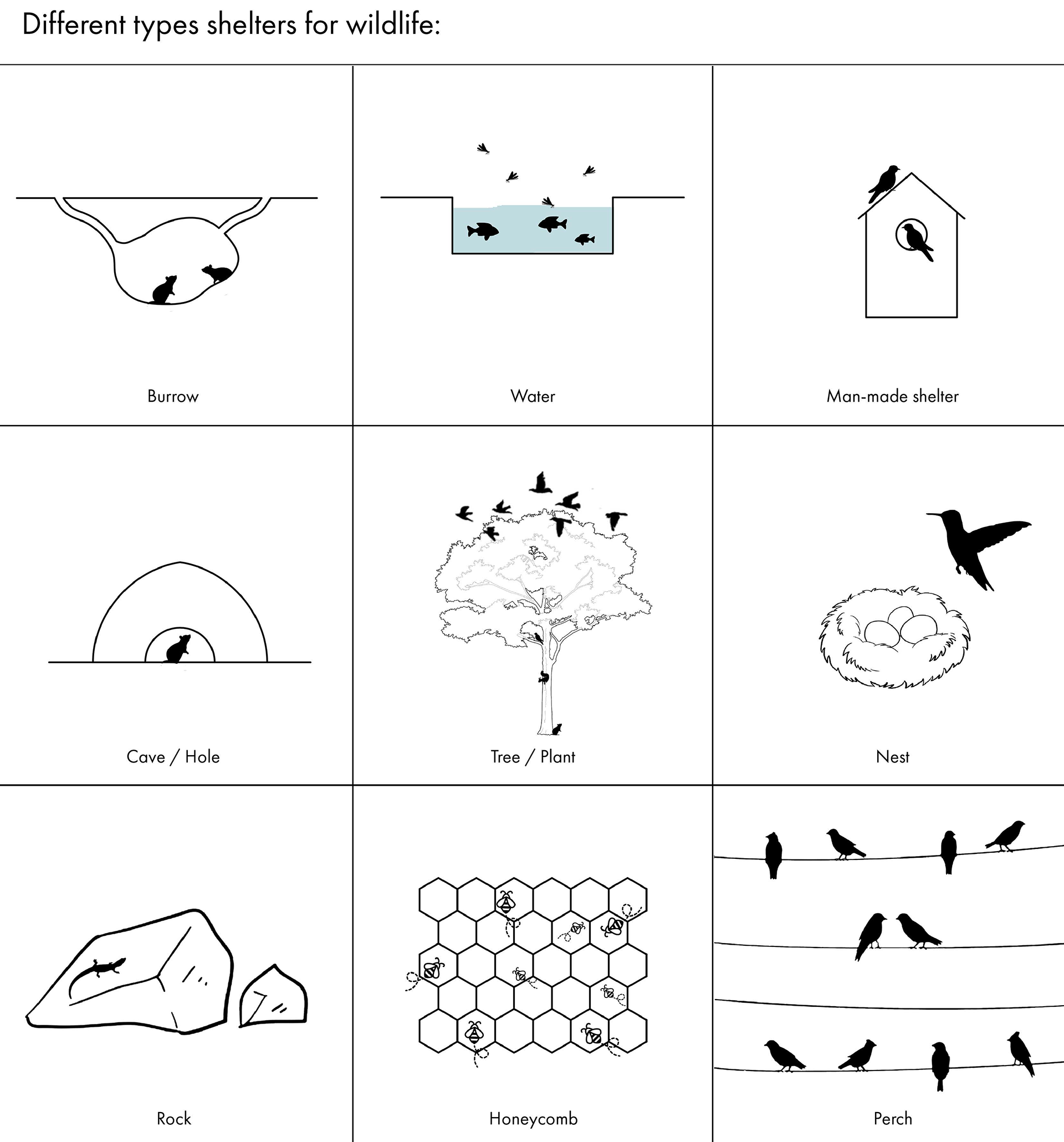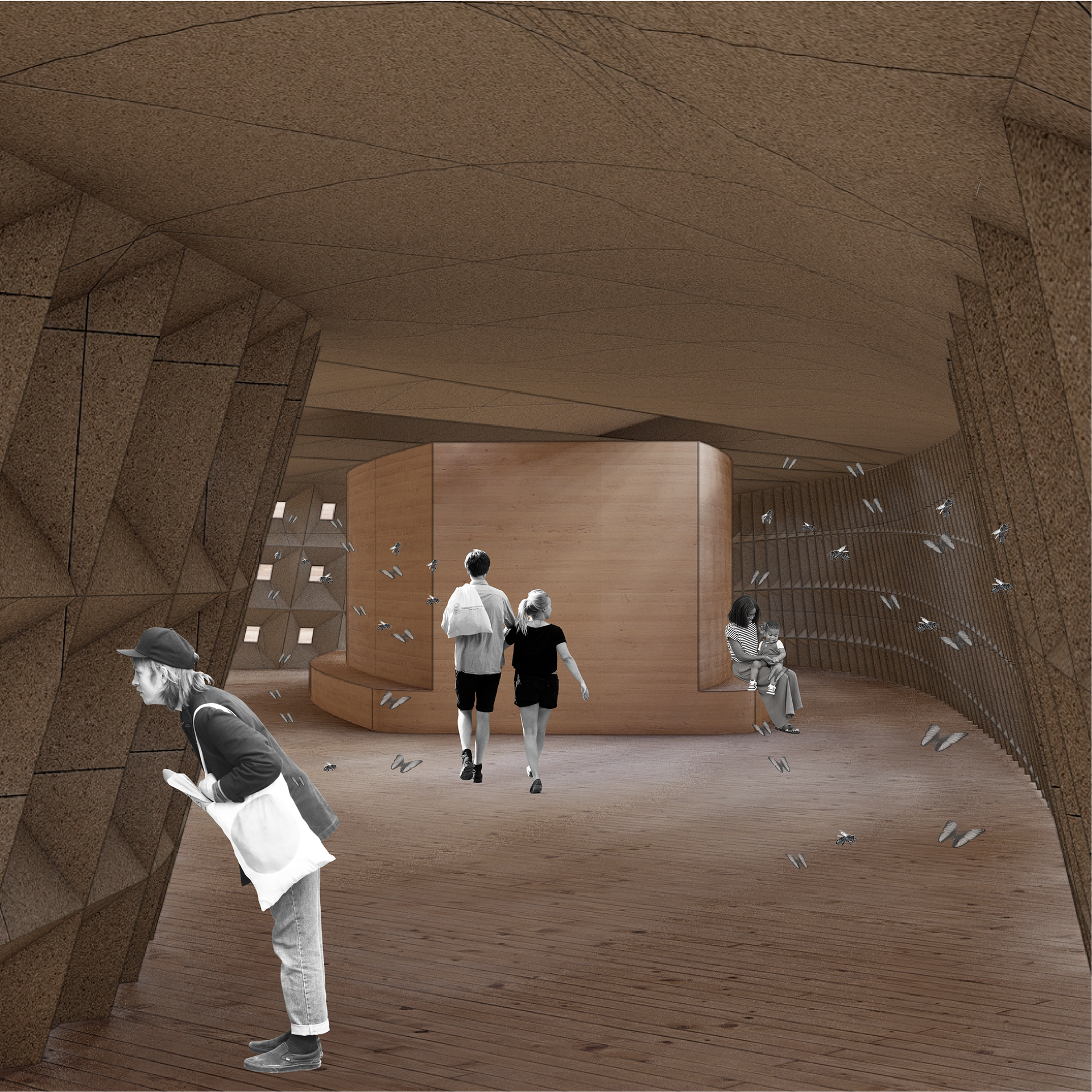Year: 2023
Location: Surfridge, Los Angeles, California (Conceptual)
Instructor: Anthony Fontenot
Tools: Rhino, Grasshopper, Adobe Creative Suite (Photoshop, Illustrator, InDesign)
Location: Surfridge, Los Angeles, California (Conceptual)
Instructor: Anthony Fontenot
Tools: Rhino, Grasshopper, Adobe Creative Suite (Photoshop, Illustrator, InDesign)
Post-Anthropocentric Park reimagines the abandoned Surfridge neighborhood near LAX as a landscape of cohabitation between humans and non-human species. Once a coastal residential area for celebrities, the site was vacated due to airport noise and has since become a sanctuary for endangered wildlife like the El Segundo blue butterfly. The project challenges human-centered design by envisioning a future where cities no longer compromise biodiversity.
Through façade integration, habitat camouflage, and species-specific strategies, including nesting zones, insect shelters, water collection, pollinator corridors, and native plantings, the design supports both ecological restoration and shared use by wildlife and people. I deepened my knowledge of native species and strengthened my ability to design with ecological sensitivity, asking not only what people need from architecture, but what wildlife might need in return.
Design Process

Site Analysis

Massing Model Diagram



Wildlife and Restoration Research

Landscape Plan

List of Native Plants

View from a Bird Perspective

View from a Human Perspective



View from an Insect Perspective

View from a Human Perspective



View from an Insect Perspective

View from a Human Perspective



